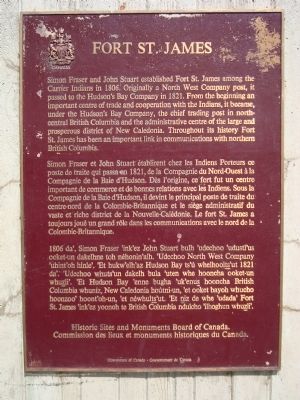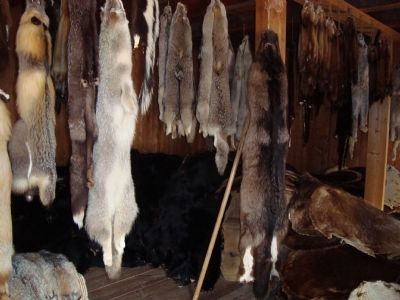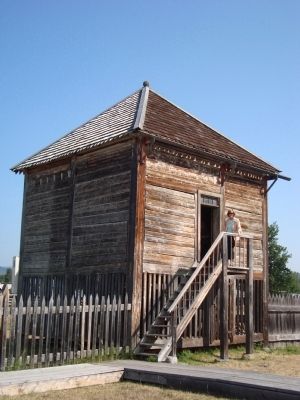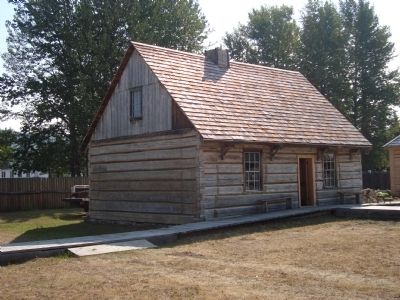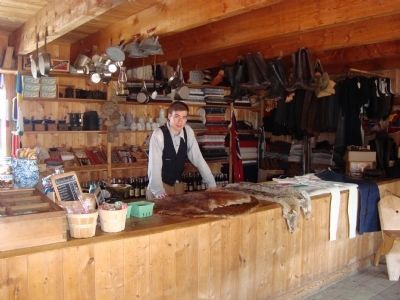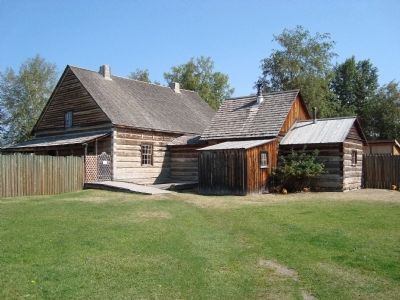Fort St. James in Cariboo, British Columbia — Canada’s West Coast (North America)
Fort St. James
English:
Simon Fraser and John Stuart established Fort St. James among the Carrier Indians in 1806. Originally a North West Company post, it passed to the Hudson’s Bay Company in 1821. From the beginning an important centre of trade and cooperation with the Indians, it became, under the Hudson’s Bay Company, the chief trading post in north-central British Columbia and the administrative centre of the large and prosperous district of New Caledonia. Throughout its history Fort St. James has been an important link in communications with northern British Columbia.
French:
Simon Fraser et John Stuart établirent chez les Indiens Porteurs ce poste traite qui passa en 1821, de la Compangnie du Nord-Ouest ŕ la Compangnie de la Baie d’Hudson. Dčs l’origine, ce fort fut un centre important de commerce et de bonnes relations avec les Indiens. Sous la Compangnie de la Baie d’Hudson, il devint le priincipal poste de traite du centre-nord de la Colombie-Britannique et le sičge administratif du vaste et riche district de la Nouvelle-Caledonie. Le fort St. James a toujours joué un grand rôle dans les communications avec le nord de la Columbie-Britannique.
Dakelh (Carrier):
1806 da’, Simon Fraser ‘ink’ez John Stuart bulh ‘udechoo ‘udustl’us ooket-un dakelhne toh néhonin’aih. ‘Udechoo North West Company ‘uhint’oh hinle’. ‘Et hukw’elh’az Hudson Bay ts’u whelhoolts’ut 1821 da’. ‘Udechoo whuts’un dakelh bula ‘uten whe hooncha ooket-un whuzli’.’Et Hudson Bay ‘enne bugha ‘uk’enus hooncha British Columbia whuniz, New Caledonia hoútni-un, ‘et ooket bayoh whucho hoonzoo’ hoont’oh-un, ‘et néwhults’ut. ‘Et niz de whe ‘udada’ Fort St. James ‘ink’ez yoonoh te British Columbia ndulcho ‘ilhoghun whuzli’.
Historic Sites and Monuments Boart of Canada/Commission des lieux et monuments historiques du Canada
Erected by Historic Sites and Monuments Board of Canada - Government of Canada.
Topics. This historical marker is listed in these topic lists: Forts and Castles • Native Americans. A significant historical year for this entry is 1806.
Location. 54° 26.358′ N, 124° 15.368′ W. Marker is in Fort St. James, British Columbia, in Cariboo. Marker is on Kwah Road West, 0.3 kilometers west of Stewart Lake Highway (British Columbia Highway 27), on the right when traveling west. Touch for map. Marker is at or near this postal address: 280 Kwah Road West, Fort St James BC V0J, Canada. Touch for directions.
More about this marker. This marker is located just to the right of the main entrance of the Fort St. James National Historic Site of Canada Visitors Centre.
Regarding Fort St. James. “Long before Alexander
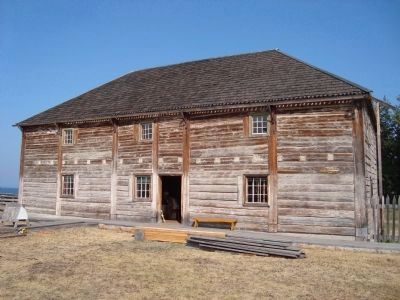
Photographed By Barry Swackhamer, August 17, 2010
2. General Warehouse and Fur Store (1888-1889)
“The warehouse housed the trade goods for Fort St. James and the surrounding outposts. Furs were stored in this building where they were baled for their journey to Victoria. The warehouse is one of the finest surviving examples of a Red River frame fur trade building in Canada.”
“Simon Fraser, John Stuart and those that accompanied them, found this area rich in all kinds fur-bearing animals. Once established, the post became an important trading place for the Dakelh."
“Stuart Lake Outpost was renamed Fort St. James in 1821 with the amalgamation of the North West Company and the Hudson’s Bay Company. What you see is the fourth building phase of the Fort in its original location. As a place for trade, the post was alive and active until 1952.”
Source: Fort St. James National Historic Site of Canada, Parks Canada pamphlet.
Also see . . . David Douglas Biography. (Submitted on May 27, 2011, by Barry Swackhamer of Brentwood, California.)
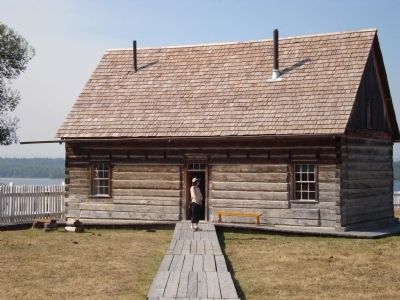
Photographed By Barry Swackhamer, August 17, 2010
6. Tradestore and Office (1884)
“This was the commercial centre of the post where furs were traded for many goods displayed inside. The building also served as the first post office in the area until fires destroyed it in 1919. The building that stands today is an authentic reconstruction to the 1896 period.”
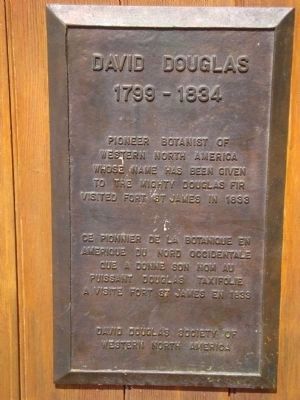
Photographed By Barry Swackhamer, August 17, 2010
9. David Douglas Marker
1799-1834
Ce pionnier de la botanique en Amerique du Nord Occidentale que a donne son nom au puissant Douglas Taxifolie a visite Fort St. James en 1833 David Douglas Society of Western North America
Credits. This page was last revised on July 23, 2018. It was originally submitted on May 27, 2011, by Barry Swackhamer of Brentwood, California. This page has been viewed 1,171 times since then and 13 times this year. Photos: 1, 2, 3, 4, 5, 6, 7, 8, 9. submitted on May 27, 2011, by Barry Swackhamer of Brentwood, California. • Syd Whittle was the editor who published this page.
Editor’s want-list for this marker. Wide area view of the marker and its surroundings. • Can you help?
